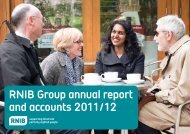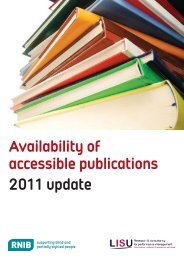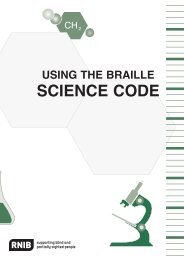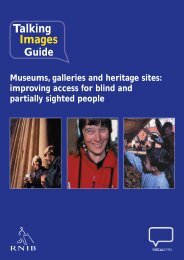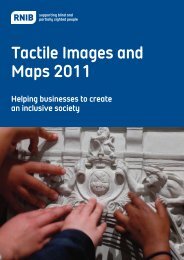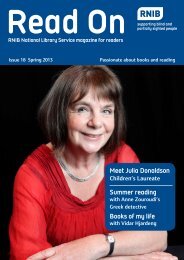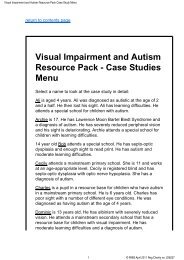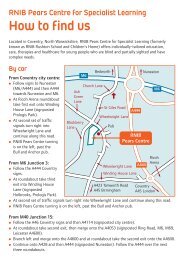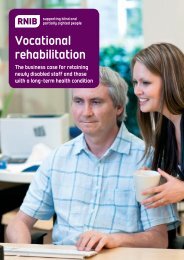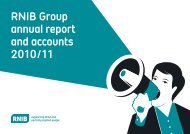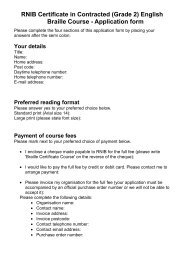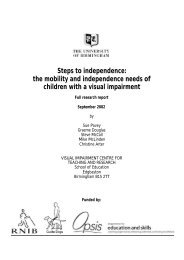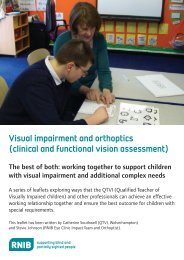Download Complete Report (PDF 1.19mb) - RNIB
Download Complete Report (PDF 1.19mb) - RNIB
Download Complete Report (PDF 1.19mb) - RNIB
Create successful ePaper yourself
Turn your PDF publications into a flip-book with our unique Google optimized e-Paper software.
5. Setting the scene<br />
could be overcome. Confidence with technology and awareness of assistive devices and<br />
technologies are important in increasing independence. A few participants felt entirely<br />
excluded from particular activities and did not consider that technology could offer<br />
assistance to them. For many of these people, confidence with technology or having<br />
the know-how (eg word-of-mouth through close social networks of people with similar<br />
sight problems) was lacking.<br />
Participants’ views on how industry can and could support their needs varied, often<br />
related to their sense of dependency. For instance, for some partially sighted<br />
participants, technical solutions involving colours and contrast were key; whilst some of<br />
those who were blind expected that they would require more substantial product<br />
modifications.<br />
Some participants were sympathetic to the hurdles faced by industry in implementing<br />
accessible and usable product design, commonly citing small markets as a possible<br />
hurdle for industry. Others felt they were increasingly being left behind in a world<br />
dominated by new digital technologies in which their existing learned product-use<br />
strategies are no longer effective or relevant (eg touch-screen devices).<br />
“I think in an ideal world, companies should build things designed for blind people<br />
but I know the audience is limited. For me [it] is difficult to find and buy<br />
something suitable because I am not totally blind; I need devices with extra<br />
features rather than talking substitutes. Things like changeable colours are really<br />
useful for me.” [blind and partially sighted: mild sight loss, male, 18-30 years]<br />
“It is important to have disabled people [involved] in the products design process.”<br />
[blind and partially sighted: severe sight loss, male, 75+ years]<br />
5.3. Value of radio (all samples)<br />
Radio valued by all samples<br />
Radio was valued by all participants who were interviewed irrespective of the sample<br />
from which they were drawn. This may partly reflect a sampling bias - all were recruited<br />
because they were DAB radio users and willing to give time to talk about their DAB<br />
radio experiences. Similar sampling bias could be present in any similar type of<br />
research, where participants voluntarily agree to take part. Across the participants who<br />
were sighted, there was no evidence to suggest any difference in the value placed on<br />
DAB radio between people with dyslexia, those with dexterity impairment and the<br />
sighted controls. The only differences related to the amount of time people had to<br />
listen to DAB radio - for instance older people who were retired (eg dexterity sample)<br />
44



